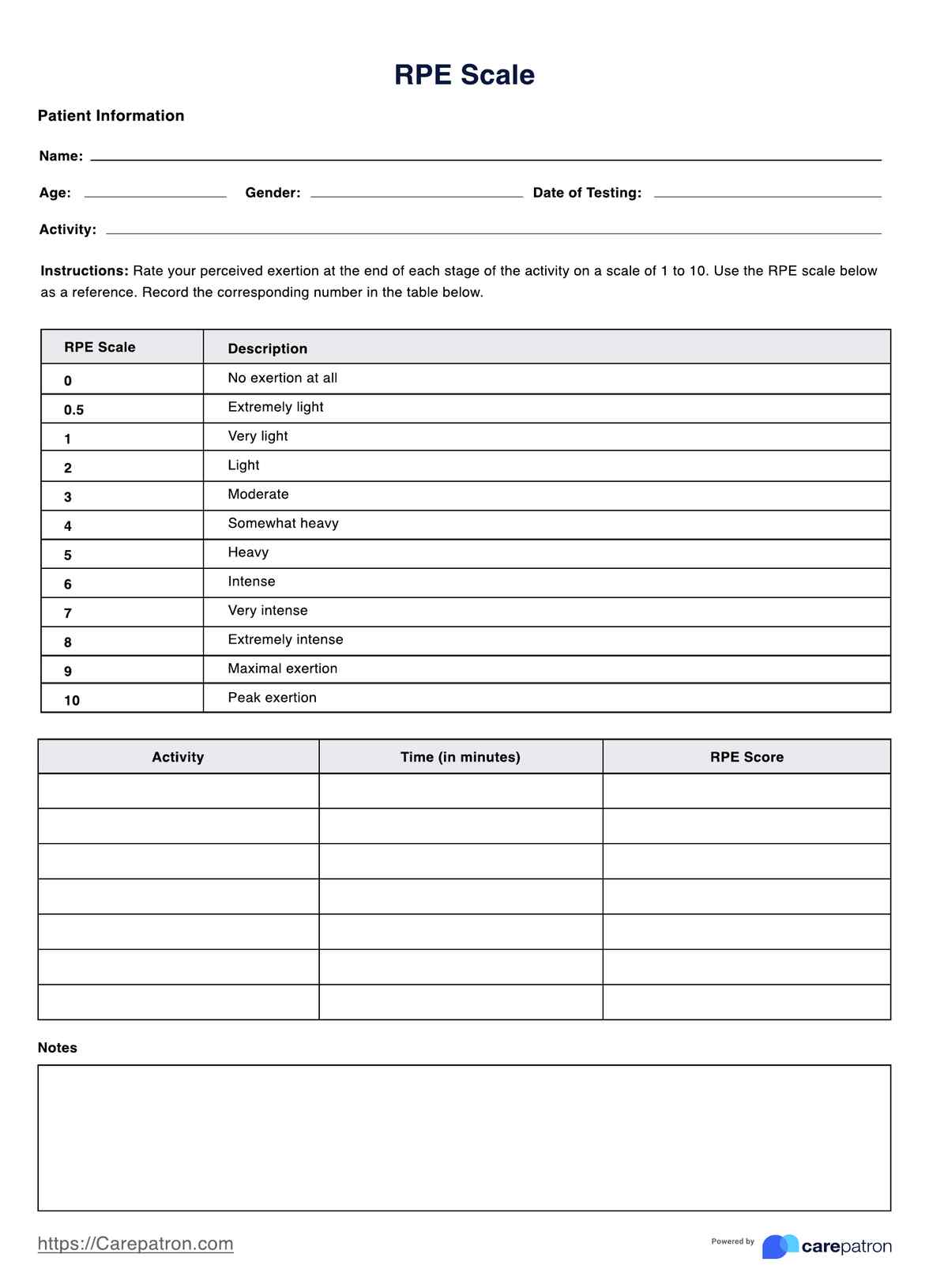The Borg Rate of Perceived Exertion (RPE) Scale measures an individual's subjective perception of the intensity of physical activity, encompassing feelings of physical stress, effort, and fatigue, rather than objective physiological data like heart rate.

RPE Scale
Learn about the Rate of Perceived Exertion (RPE) scale and use it to track and adjust workout intensity. Get a free RPE chart template here.
RPE Scale Template
Commonly asked questions
The original Borg Rate of Perceived Exertion (RPE) ranges from 6 to 20, designed to roughly correlate with heart rate when multiplied by 10 (e.g., an RPE of 12 approximates a heart rate of 120 bpm). The modified Borg or CR-10 scale uses a more subjective 0-10 range, offering a simpler way to rate exertion with verbal anchors that are easier for many to understand and apply, especially in strength training.
Yes, the RPE Scale can be used for any physical activity, from running and cycling to weightlifting and yoga. It works for aerobic exercises like running and swimming to resistance training, sports, and even daily physical tasks, as it reflects the individual's overall sense of effort.
EHR and practice management software
Get started for free
*No credit card required
Free
$0/usd
Unlimited clients
Telehealth
1GB of storage
Client portal text
Automated billing and online payments











